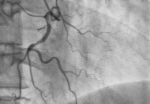Percutaneous treatment of chronic total occlusion (CTO) has traditionally been via the transfemoral approach (TFA). The use of the transradial approach (TRA) in complex coronary interventions has been increasing. A randomized study assessed the use of TRA vs TFA in complex PCI (58% CTO) and TRA saw favorable outcomes. The aim of this prospective, randomized,...
Improved Ventricular Function Post Revascularization: Fewer Events across Subgroups?
According to the STITCH and STITCHES trials, in patients with coronary artery disease and deteriorated left ventricular ejection fraction (EF), revascularization of a viable heart might reverse left ventricular systolic dysfunction. In these patients, improved EF after coronary revascularization appears to increase long term survival, particularly after cardiac artery bypass grafting (CABG), compared against medical...
SOLACI Present at the Main Interventional Cardiology Meetings in the World
Once more, the Latin American Society of Interventional Cardiology (SOLACI) will attend two of the most important annual meetings in the field: the EuroPCR 2022 and the SCAI 2022 Scientific Sessions. The society will take part in with 2 challenging joint sessions to shar the Latin American reality in different areas of interest within the...
Should We Start Using OCT in Myocardial Infarction with Non-Obstructive Lesions?
In ST elevation MI, the common assessment methodology continues to the angiography; however, we all know it has certain limitations, especially when it comes to intermediate lesions or coronary dissections. Using imaging, especially high resolution such as OCT, has been looked into by some studies, but never randomized studies. The EROSION III is a randomized...
Coronary Angioplasty Evolution According to Syntax II: 5-Year Followup
It has been long since the SYNTAX (NEJM 2009) came out comparing percutaneous coronary intervention (PCI) against coronary artery bypass grafting (CABG). That emblematic study associated PCI with first generation drug eluting stents (Taxus) with increased major cardiac and cerebrovascular events (all-cause mortality, AMI, stroke, or any revascularization – MACCE) vs. CABG, at 5 years,...
WOEST 2 | Dual Versus Triple Antithrombotic Scheme in the Real World.
The WOEST study found a significant reduction in bleeding complications post PCI with oral anticoagulation indication (OAC) when treating patients with dual antiplatelet therapy (DAPT) vs. the triple antithrombotic scheme. Several randomized studies have shown these results. At present, the guidelines recommend using the triple antithrombotic scheme in patients according to ischemic and bleeding risk. ...
Ticagrelor Shows Benefits in Coronary Microvascular Function after NSTEMI
Coronary microvascular disfunction (CMD) is an important long-term prognosis predictor. CMD treatment can be an effective therapeutic strategy for patients with acute coronary syndrome (ACS). Nevertheless, more studies are needed to assess different strategies. In the PLATO (Study of Platelet Inhibition and Patient Outcomes) study, ticagrelor vs. clopidogrel reduced ischemic events and overall mortality in...
Is iFR Reliable After 5 Years? Analyzing the iFR-SWEDEHEART at 5 Years
Fractional flow reserve (FFR) proved to be very useful and safe in the FAME study, but its trade-off was using adenosine (which has a short half-life) and adverse reactions, which fortunately were rare. Subsequently, two large studies—the iFR-SWEDEHEART and DEFINE-FLAIR—demonstrated that instantaneous wave-free ratio (iFR) offered comparable results to FFR in the short term, avoiding...
ACC 2022 | PACMAN AMI
Atherosclerosis plaque causing AMI is often large in volume, high in lipids and have a thin fibrous cap. Statins often reduce atherosclerosis progress, but the impact of PCSK 9 inhibitors (alirocumab) after acute coronary syndrome is scarcely known. The aim of this study was to determine the effect of alirocumab using intracoronary imaging (IVUS, OCT,...
CRUNCH Registry: An Option for Underexpanded Stents
Coronary calcification hinders both stent transfer and implantation, and has been associated with a higher risk of complications. Coronary perforation is the worst of them. In turn, these calcifications affect the preparation of coronary plaque, resulting in an underexpanded stent (US), which is a strong predictor of restenosis and early thrombosis. For the management of...









